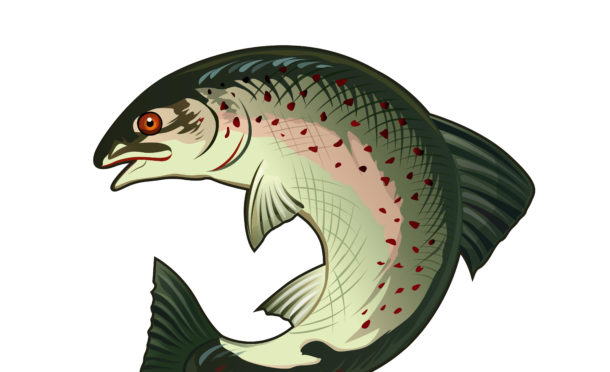
The migration routes of wild salmon from Scotland’s west coast are to be tracked for the first time in a bid to save the iconic fish.
Salmon numbers in Scotland’s rivers are perilously low and experts hope the landmark study of their epic journey from rivers on the west coast to the north Atlantic will help find new ways to protect the fish.
Their modern-day migration is filled with hazards including predators, commercial fish farms, pollution and obstacles in rivers. But now the Scottish Government has committed £750,000 for the second phase of the Missing Salmon Project to track hundreds of smolts (juvenile salmon) as they head for sea this year.
Mark Bilsby, chief executive of the Atlantic Salmon Trust – which is leading the project – said: “Salmon predate the last ice age and have been swimming around the Atlantic for a few million years. But we’ve never known how the salmon from the west coast make that journey or what pressures they face along the way. This programme is set up to look at where the fish go. It’s a really big step forward.
“We know they have to go north and we know at some stage they’re going to hit the continental shelf but we don’t know how they get there and what challenges and pressures they face along that route. If we know where they go we can start to work out some of these things.
“The funding is really welcome and it shows that the Scottish Government is willing to act.” But, he added: “I think the biggest risk is apathy. There isn’t time to go and do 10 or 15 years of research. We need to get on with it. There’s no point in doing this for academic research, it is to get more effective management so we can recover the species. Just standing idly by is not going to cut it any more.”
Juvenile salmon will be tagged in up to six rivers then tracked using state-of-the art acoustic arrays to pick up their signal. Two arrays will be laid in the sea – one from Malin Head in Ireland to Isla and the other between Skye and the Uists. Mortality data will be collected from those which perish in rivers, and it will be compared to the figures for the original phase of the Missing Salmon Project in the Moray Firth.
Half of the smolts from the seven sample rivers in the north-east died before reaching the sea. The project will be unable to determine whether aquaculture is a factor in salmon mortality rates.
However, the geography of the west coast means the sea – unlike the more enclosed Moray Firth – is too open to cover every possible route with acoustic trackers.
Salmon killed by sea lice associated with farms also do not die immediately, so deaths would be likely to be much further away from the coast. Early findings from the tracking study on the Moray Firth has indicated that predators – including birds and bigger fish – are a key threat to the vulnerable smolts.
The announcement of government funding for the west coast project was made ahead of a Scottish Parliament roundtable discussion between organisations with an interest in reversing the catastrophic decline in wild salmon stocks.
Mr Bilsby said: “I thought there was good recognition that salmon are in crisis by the different NGOs, agencies and politicians that were in the room. They took it really seriously and I think there was a recognition that there needs to be a step change in management of salmon if Scotland wants to hold onto salmon.
“We are all talking but what we need to do is not talk more, we need to really focus our efforts and act with much more intensity and ambition. What we’ve got to do is give them the room and the ability to adapt to the changing world.
“That’s what they desperately need, they’ve been around for millions of years and if we give them that room to adapt and they will. They’re very good at it. We just need to stop messing them up.
“It’s an indicator of our environment, of the rivers and the sea so if we mess up with salmon it’s showing that we’re messing up on an oceanic level, which is deeply worrying.”
The Scottish Government said: “The decline in the numbers of wild salmon returning to Scottish rivers is of great concern, and caused by a range of complex factors.
“This week’s constructive discussions will help to inform our work to develop a Wild Salmon Strategy by September 2020. We will continue to work alongside key stakeholders to do everything possible to safeguard the future of Scotland’s wild salmon.”

Enjoy the convenience of having The Sunday Post delivered as a digital ePaper straight to your smartphone, tablet or computer.
Subscribe for only £5.49 a month and enjoy all the benefits of the printed paper as a digital replica.
Subscribe